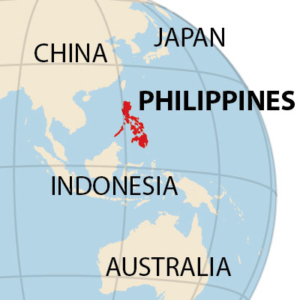IEEFA Report: Philippines can lower electricity costs, improve energy security by developing rooftop solar potential

Aug. 20, 2018, MANILA (IEEFA) — A report published today by the Institute for Energy Economics and Financial Analytics details how rooftop solar in the Philippines has the potential to lower the cost of power and improve national energy security.
The report — “Unlocking Rooftop Solar in the Philippines” — notes that the Philippines has some of the highest-priced electricity in the 10-member Association of Southeast Asian Nations but concludes that wise policy choices going forward can drive the uptake of solar through programs that will ensure power supply and lower prices.
 The report sees rooftop solar lowering electricity costs to PhP 2.50 per kilowatt-hour (kWh) (excluding financing expenses) and triggering US$2.8 billion or PhP1.5 trillion in new investment by 2030.
The report sees rooftop solar lowering electricity costs to PhP 2.50 per kilowatt-hour (kWh) (excluding financing expenses) and triggering US$2.8 billion or PhP1.5 trillion in new investment by 2030.
“The government is in a position to change the longstanding status quo, which disproportionally puts fuel-price and foreign-exchange risk on consumers, while utilities and power generators remain insulated from market changes,” said Sara Jane Ahmed, an IEEFA energy finance analyst and the author of the report. “As a result, power suppliers have no incentive to transition away from coal and diesel or to hedge against price-change and currency risks.”
The report describes how the Philippines continues to lag global trends toward power-sector modernization, which are gaining momentum around rapidly-declining costs and technological advances in renewable energy, energy efficiency and distributed storage.
The report notes further that that the Philippine Board of Investments has already approved eight solar projects through Solar Philippines Commercial Rooftop Projects Inc. worth PhP 85.96 billion, or US$1.65 billion. A conservative estimate of 8 gigawatts (GW) of solar installations by 2030 includes 35% of that coming from rooftop solar, an investment value of US$ 2.8 billion.
“These trends present an enormous opportunity to replace imported-coal and imported-diesel models with indigenous alternatives,” Ahmed said. “Solar, wind, run-of-river hydro, geothermal, biogas, and storage are competitive, viable domestic options that can be combined to create a cheaper, more diverse and secure energy system.”
Every kilowatt of installed rooftop solar means a reduction in the need for imported coal and diesel power, Ahmed added. This phenomenon alone could save the Philippines up to US$2.2 billion annually in its current account deficits as well as US$200 million per year in diesel subsidies.
To cite just two examples of recent renewable energy deflation in the Philippines, Manila Electric Company (Meralco) in March of this year received the country’s lowest wind electricity generation bid ever on a new 150-megawatt (MW) wind turbine project in the Rizal province, for PhP 3.50 per kilowatt-hour (kWh). Solar is competing similarly, with Meralco having contracted for a PhP 2.99-per kWh, 50-MW capacity plant.
Coal-fired power generation, by comparison, costs upwards of PhP 3.8-5.5 per kWh, and the true cost of imported diesel-fired power ranges from PhP 15 to PhP 28 per kWh.
Rooftop solar costs PhP 2.50 per kWh (without financing expenses) to 5.3 per kWh (with financing expenses), utility scale solar power can cost as little as PhP 2.99 per kWh, wind is PhP 3.5 per kWh, geothermal is PhP 3.5-4.5 per kWh, and run-of-river hydro costs PhP 3-6.2 per kWh.
The report names three major hurdles to the broader adoption of solar power:
—Regulatory, including unwieldy requirements around “distribution impact studies” and distribution asset studies” alongside assorted other solar-permit rules as well as resistance to net billing, allows end-users to generate electricity from solar rooftop for their own use and either sell any excess energy to the distribution utility at current wholesale prices or be fairly credited.
—Administrative, which includes inadequate transparency around customer “load profiles,” which show consumption patterns that are crucial to understanding usage, and institutional resistance to net-metering.
—Financial, which restrict affordability of and accessibility to rooftop solar.
“Development of all more affordable options is still hampered by costly and unnecessary red tape,” Ahmed said. “The Philippine government can help break the logjam by adopting policies that inject more diversity—and more energy security—into the electricity system while helping lower consumer costs by enabling the uptake of cheaper, cleaner options such as rooftop solar,”
“More important, fossil fuel subsidies and electricity-sector losses are a growing drag on economic growth in the Philippines. Current plans for fossil fuel generation would instill a long-term dependence on fossil fuel imports, which would lead to more national debt, devaluation of the currency and an increase in inflation, all of which would destabilize the Philippine economy.”
Full report: “Unlocking Rooftop Solar in the Philippines”
Media contacts:
(Manila) Sara Jane Ahmed [email protected] +63 917 891 5464
(U.S.) Karl Cates [email protected]
About IEEFA
The Institute for Energy Economics and Financial Analysis conducts research and analyses on financial and economic issues related to energy and the environment. The Institute’s mission is to accelerate the transition to a diverse, sustainable and profitable energy.
###











